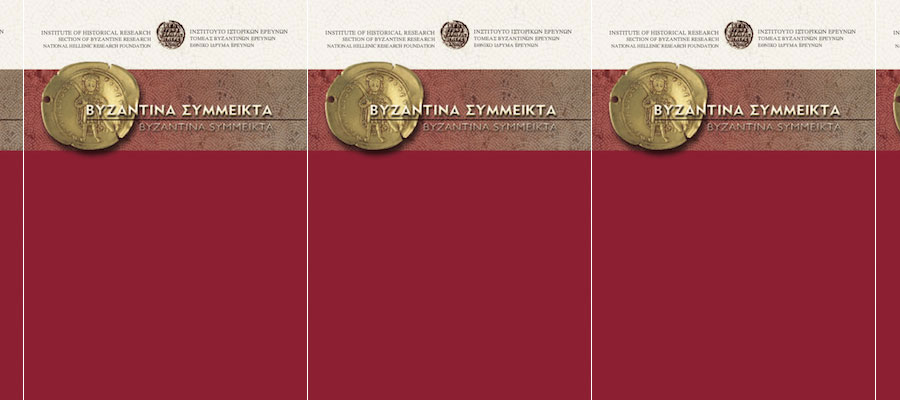Byzantina Symmeikta, volume 34 (2024).
CONTENTS INCLUDE
Die Legende vom Einhorn bei Michael Choniates: Quellen und Imitationen
Μαρία ΤΖΙΑΤΖΗ -ΠΑΠΑΓΙΑΝΝΗ
This paper focuses on the poem of Michael Choniates on the image of the unicorn, which has not been systematically researched since its publication by Spyridon Lampros in 1880. I present a new critical edition of the poem based on the two manuscripts transmitting it, most notably the Vaticanus, which Lampros had not used for his edition. I argue that Choniates’ main source for the legend of the unicorn is the Byzantine novel Barlaam and Joasaph, by comparing Choniates’ verses with the text of his source. I proceed by tracing the iconographic models of this legend which inspired Choniates, primarily the representations of the unicorn in Greek psalteries. Finally, I examine its reception in the Byzantine literature after Choniates (especially in Manuel Philes) until the early 15th century, as well as in the iconographic tradition up to the 18th century.
Michael Attaleiates’ Ἀλβανοὶ and Λατῖνοι: the southern Italian rebels and the changing perception of the Normans in Byzantium
Guilherme WELTE BERNARDO
This article revises the current interpretation regarding who were the Ἀλβανοὶ (Albans) and Λατῖνοι (Latins) mentioned in Michael Attaleiates’ History, written in the 11th century. While previous scholars identified these groups as Albanians and Normans, the article argues that Attaleiates uses both terms to generically drew a parallel between ancient groups appearing in Greco-Roman historiography and contemporary groups in the southern Italy during his time, like the Lombards. It also suggests that Normans (the "Franks from Italy") are sometimes referred to as Λατῖνοι in the work, particularly due to their association with the Lombard population of southern Italy, where they settled. For a more in-depth analysis, the article identifies two different contexts in which the term Λατῖνοι was used by Attaleiates: the first in association with the Ἀλβανοί (i. e., the Lombards), and the second in parallel with the Φράγγοι (Franks, i.e., the Normans). Through these reexaminations, the article provides new insights into the complex relationships between the medieval Roman Empire and its neighbors in the Italian Peninsula.
Η "Πανοπλία δογματική" του Ευθυμίου Ζιγαβηνού στον κώδικα Parisinus gr. 1310
Δημήτριος NIKOY
The texts inscribed on ff. 146v-152v of codex Parisinus gr. 1310 (15th c.) are wrongly regarded as coming from different works of John Chrysostom. This article shows that they are parts of Euthymios Zigabenos’ Panoplia Dogmatica, which, once identified, were traced to their source; the text delivered by this codex was then compared both to the edition and to the older codices containing the work, and the differences are noted.
Ερμηνευτικά και κριτικά σχόλια στον Ιωάννη Γεωμέτρη
Γρηγόριος ΠΑΠΑΓΙΑΝΝΗΣ
Im vorliegenden Beitrag werden Verse aus hauptsächlich drei Gedichten (zwei im elegischen und einem im „jambischen“ Metrum) des Ioannes Geometres (10. Jh.) kommentiert; konkret werden: eine Vermutung über den Vornamen des Vaters des Dichters geäußert, weitere Quellen bzw. Parallelen beigesteuert, eine textkritische Bemerkung bzw. eine Konjektur unterbreitet und, schließlich, eine bereits bekannte Interpretation weiter untermauert.
